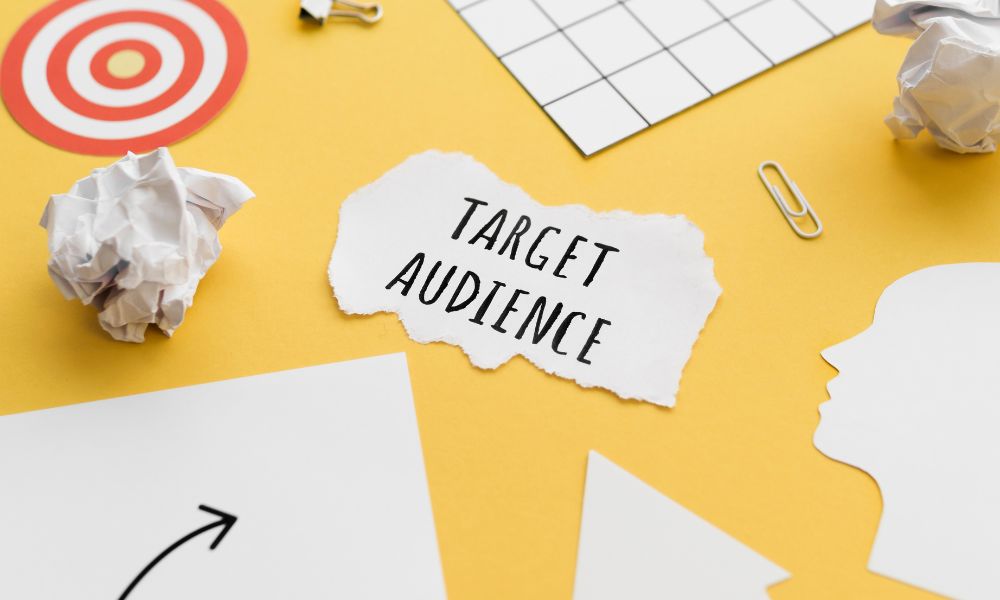
Picture this: Two campaigns – identical budgets.
Campaign A launches with a flurry of activity. The posts are beautiful. The influencer has a million followers. The comments are filled with fire emojis and “OMG, need this!” The campaign report is 50 slides long, filled with impressive-looking charts on reach and engagement. The team celebrates a “successful” launch.
Campaign B runs almost quietly. The creators have smaller, but fiercely loyal, followings. The content is less about glamour and more about genuine use. There are fewer fire emojis, but more comments like, “How does this work with my sensitive skin?” and “Just used your code, can’t wait to try this!” The campaign report is 10 slides. It shows a direct line from influencer content to a 22% increase in sales from a new demographic and a measurable shift in brand perception.
The first campaign was successful. The second was effective.
In an era of tightening budgets and heightened accountability, being good is no longer good enough. Your influencer program needs to be undeniably, quantifiably effective. It’s the difference between being a cost center and being a growth engine.
Effectiveness isn’t just another word for success. It’s the disciplined science of optimizing every dollar, every relationship, and every piece of content to deliver the highest possible return on your marketing objectives. It’s not about what you did; it’s about what you achieved.
Let’s deconstruct the formula.
Redefining the Game: Why “Success” and “Effectiveness” Are Not the Same
Before we can build an effective program, we must first shatter a common misconception: that activity is synonymous with achievement.
The Success Trap: Celebrating Activity Over Achievement
A campaign can be “successful” on a tactical level, it launched on time, the creators posted, the content was beautiful, and it generated a lot of “noise”, without ever moving the business needle. This is the success trap.
- Success asks: “Did we get a lot of likes?”
- Effectiveness asks: “Did we acquire a lot of high-value customers?”
Success is often measured in outputs (number of posts, impressions generated). Effectiveness is exclusively measured in outcomes (conversions driven, brand sentiment improved, customer lifetime value increased). Falling into the success trap is the fastest way to see your budget cut when leadership demands to see real business impact.
The Efficiency vs. Effectiveness Divide: Doing Things Right vs. Doing the Right Things
This is a crucial, related distinction, often attributed to management guru Peter Drucker.
- Efficiency is about doing things right. It’s operational. It’s about minimizing waste and maximizing output for a given input. In influencer terms, this is getting the lowest possible Cost-Per-Engagement (CPE).
- Effectiveness is about doing the right things. It’s strategic. It’s about ensuring that the activities you’re so efficiently executing are the ones that directly contribute to your most important business goals.
You can be highly efficient at running campaigns that are completely ineffective. The goal is to be both.

The Effectiveness Equation: A Three-Variable Framework
Effectiveness is not a mystery. It is a predictable outcome of mastering three core variables. Think of this as your strategic equation:
Influencer Marketing Effectiveness = Strategic Alignment x Measurable Impact x Optimization & Scalability
Let’s break down each variable.
Variable 1: Strategic Alignment – Is Your Campaign Built on a Foundation of Business Value?
This is the “why” that must come before the “who” or the “what.” An effective campaign is engineered from the ground up to serve a business objective.
a) The Goal Funnel: From Broad Awareness to Targeted Customer Lifetime Value (LTV)
Your goal dictates your entire strategy. An effective program clearly defines what it’s set up to achieve. Is it:
- Awareness: Introducing a new product to a new market?
- Consideration: Driving traffic and lead generation for a service?
- Conversion: Directly driving sales and revenue?
- Loyalty: Increasing brand affinity and repeat purchases from existing customers?
Each of these requires a different selection of influencers, content formats, and measurement tools. Trying to be everything to everyone is a recipe for ineffective mediocrity.
b) The Audience Authenticity Check: Aligning Creator Audience with Your Ideal Customer Profile
An influencer’s follower count is irrelevant if their audience doesn’t match your target customer. Effectiveness requires going beyond demographics into psychographics. Does this creator’s community care about the problems your product solves? Do they share your brand’s values? A nano-influencer in your exact niche is infinitely more effective than a mega-influencer in an adjacent one.
c) The Content-Value Fit: Does the Creative Concept Naturally Serve the Business Objective?
Forced or inauthentic content is ineffective, no matter how pretty it is. The creative brief must create a natural bridge between the creator’s style and your goal.
- Goal: Conversion → Content should be a demonstration or review with a clear, easy-to-use call-to-action.
- Goal: Awareness → Content should be visually stunning, educational, or entertaining, introducing your brand’s core value proposition.
- Goal: Loyalty → Content should be community-focused, like a Q&A or a user-generated content challenge.
Variable 2: Measurable Impact – Are You Tracking the Metrics That Matter to the Business?
This is where you prove your effectiveness. It requires a ruthless focus on the metrics that connect to your stated business objectives.
a) The Vanity Metric Purge: Moving Beyond Surface-Level Analytics
It’s time to be brutally honest. Likes, comments, and even reach are often just vanity metrics. They are symptoms of attention, not proof of value. An effective measurement framework uses them as context, not as primary KPIs.
b) The Conversion Pathway: Mapping Influencer Touchpoints to Sales, Leads, and Sign-ups
This is the core of measurable impact. You must build a traceable pathway from the influencer’s content to a business outcome.
- Trackable Links (UTM Parameters): For every creator, for every platform.
- Unique Discount Codes & Affiliate Links: The gold standard for tracking direct sales.
- Dedicated Landing Pages: To track traffic and conversions from a specific campaign.
- The ultimate metrics here are Conversion Rate, Cost Per Acquisition (CPA), and Return on Ad Spend (ROAS). These are the numbers your CFO understands.
c) The Brand Health Monitor: Measuring Sentiment, Share of Voice, and Brand Recall Lift
For upper-funnel goals, you need to measure the intangible. This requires more sophisticated tools.
- Sentiment Analysis: Are the comments and shares positive, negative, or neutral? Is the conversation moving in the right direction?
- Share of Voice: Is the online conversation about your brand increasing relative to your competitors?
- Brand Lift Studies: Surveys that measure the direct impact of a campaign on metrics like ad recall and brand perception.
Variable 3: Optimization & Scalability – Can You Replicate and Improve Your Results?
Effectiveness isn’t a one-time event. It’s a cycle of continuous improvement. A single successful campaign is a data point; a process that produces successful campaigns consistently is an effective program.
a) The Campaign Autopsy: Learning from Both Wins and Losses
After every campaign, conduct a formal retrospective. Don’t just report on what happened; diagnose why it happened.
- What was our hypothesis?
- What did the data prove or disprove?
- Which creator outperformed expectations, and why?
- Which content format drove the highest conversion rate?
b) The Creator Tier Optimization: Allocating Budget to Your Highest-Performing Segments
Use your data to build a tiered system of creators.
- Champions: The creators who drive the highest ROMO. Invest in long-term partnerships with them.
- Professionals: Solid performers who deliver reliable results. They form the backbone of your program.
- Experimentals: New creators you’re testing with a small budget. An effective program systematically shifts budget from the lower tiers to the higher ones.
c) The Content Format Analysis: Doubling Down on What Actually Drives Action
Your data will tell a clear story. Maybe Instagram Reels drive 3x the engagement of static posts for your brand. Perhaps long-form YouTube reviews have a significantly lower CPA than TikTok videos. Effective programs codify these insights into future creative briefs, mandating what works and eliminating what doesn’t.

The Proof is in the Data: Calculating Your Effectiveness Score
To move from theory to practice, you need a way to quantify your effectiveness.
Introducing the “Return on Marketing Objective” (ROMO) Framework
While ROI is purely financial, ROMO allows you to quantify the return on any objective.
- For an Awareness Campaign: ROMO could be measured as (Equivalent Media Value of Earned Placements) / (Total Campaign Spend). If you gained media coverage and social buzz that would have cost $100,000 to buy, and your campaign cost $20,000, your ROMO is 5:1.
- For a Conversion Campaign: ROMO is your classic (Revenue Attributable to Campaign) / (Total Campaign Spend). This is your ROAS.
The Benchmarking Imperative: How Do Your Results Compare?
A 3:1 ROAS might sound good, but is it effective? The only way to know is to benchmark.
- Compare it to your other marketing channels (e.g., paid search, social ads).
- Compare it to industry averages for your sector.
This tells you if your influencer program is truly a high-performing asset or just an also-ran.
Case Study in Effectiveness: A Tale of Two Campaigns
Let’s bring the equation to life.
Campaign A: The “Successful” Launch That Delivered Mediocre Results
- Goal: Vaguely “drive awareness.”
- Strategy: Partner with 3 mega-influencers for a single, high-production-value post.
- Results: 5 Million impressions, 100,000 likes.
- Effectiveness Analysis: High reach, but no trackable links or codes. No way to measure impact on website traffic or sales. Brand sentiment unchanged. Verdict: Successful, but not effective. The budget was spent, but no business value was proven.
Campaign B: The “Effective” Program That Became a Growth Engine
- Goal: Drive $50,000 in direct sales from women aged 25-40.
- Strategy: Partner with 15 micro-influencers in the home decor and wellness space for a “30-Day Challenge,” using unique discount codes and trackable links.
- Results: 1.2 Million impressions, 45,000 likes, but, crucially: 15,000 website clicks, $65,000 in tracked sales, and a 12% increase in followers from the target demographic.
- Effectiveness Analysis: Clear objective, perfect audience alignment, and full-funnel tracking. The campaign exceeded its financial goal and provided a list of high-performing creators for a scalable retainer program. Verdict: Highly Effective.

The Future of Effectiveness: From Measuring Impact to Predicting It
We are on the brink of a fundamental shift. The current model of influencer marketing is reactive: we launch a campaign, gather data, and hope our post-campaign report justifies the spend. The future of effectiveness, however, is proactive and predictive. It’s about leveraging artificial intelligence and data not just to report on what happened, but to engineer success before the first piece of content is ever created.
The Predictive Power of AI: Engineering Success Before the Campaign Launches
Imagine this: instead of guessing which influencer might be a good fit, you input your campaign goal, target audience, and creative concept into a platform. The AI, having analyzed terabytes of data from millions of past campaigns, doesn’t just give you a list; it provides a predictive performance score.
It tells you:
- “Creator A has a 92% predicted probability of exceeding your target ROAS based on their audience’s past purchasing behavior with similar brands.”
- “Video Concept B is forecast to generate 3x more high-intent clicks than Static Concept C for your specific demographic.”
This is the leap from descriptive analytics (what happened) to prescriptive analytics (what you should do to make something happen). AI will analyze an influencer’s audience composition at a granular level, far beyond basic demographics, to predict conversion probability, identify potential brand sentiment risks, and even recommend the optimal posting schedule.
Effectiveness will no longer be a post-campaign grade; it will be a pre-campaign guarantee, fundamentally de-risking your marketing spend.
The End of One-Size-Fits-All: The Era of Hyper-Personalized Content at Scale
The notion of a single piece of content for an influencer’s entire audience is becoming obsolete. The next frontier of effectiveness is dynamic content optimization.
Here’s how it will work: An influencer posts a video about your product. Using AI-driven dynamic insertion, viewers in different locations, or with different stated interests, will see slightly different versions.
- A viewer interested in sustainability sees a version highlighting your eco-friendly supply chain.
- A viewer who values performance and specs sees a version focused on technical features and data.
- The call-to-action (CTA) itself could be dynamic: one segment sees a “Shop Now” link, while another, less familiar audience sees a “Learn More” link to a branded story.
This moves us beyond simple targeting into true content personalization at scale.
It’s the difference between shouting a single message to a crowd and having individual, relevant conversations with each person in it.
This hyper-efficiency ensures that every single impression has the maximum possible impact, dramatically increasing conversion rates and making the very concept of “wasted spend” a relic of the past. Effectiveness will be measured not by the campaign, but by the unique, personalized experience delivered to each potential customer within it.

Key Takeaway: Effectiveness Is the New Efficiency
Influencer marketing effectiveness is the new mandate. It’s the disciplined practice of ensuring your program isn’t just a line item, but a proven, scalable, and indispensable driver of business growth.
By mastering the equation of Strategic Alignment, Measurable Impact, and Optimization & Scalability, you stop presenting reports filled with activity and start presenting business cases filled with achievement. You transform your influence from a vague concept into an undeniable, quantifiable impact.
And that is a story every leader in the company wants to hear.
If you want to evaluate your next campaign’s effectiveness end-to-end, explore automated reporting and analytics within Hypefy’s influencer platform to identify which creators truly drive ROI.
Related Articles to Read
- How to Measure Influencer Marketing Success: Metrics, Tools & Real-World Results
- Influencer Rate Card: How to Price, Negotiate & Win (The 5 Pillars of Smart Pricing)
- How to Negotiate with Influencers: Strategy, Transparency & Win-Win Deals



